Microsoft Advertising launches enhanced website exclusion tools
New controls enable bulk management of 10,000 domains per list across Audience and Search campaigns.
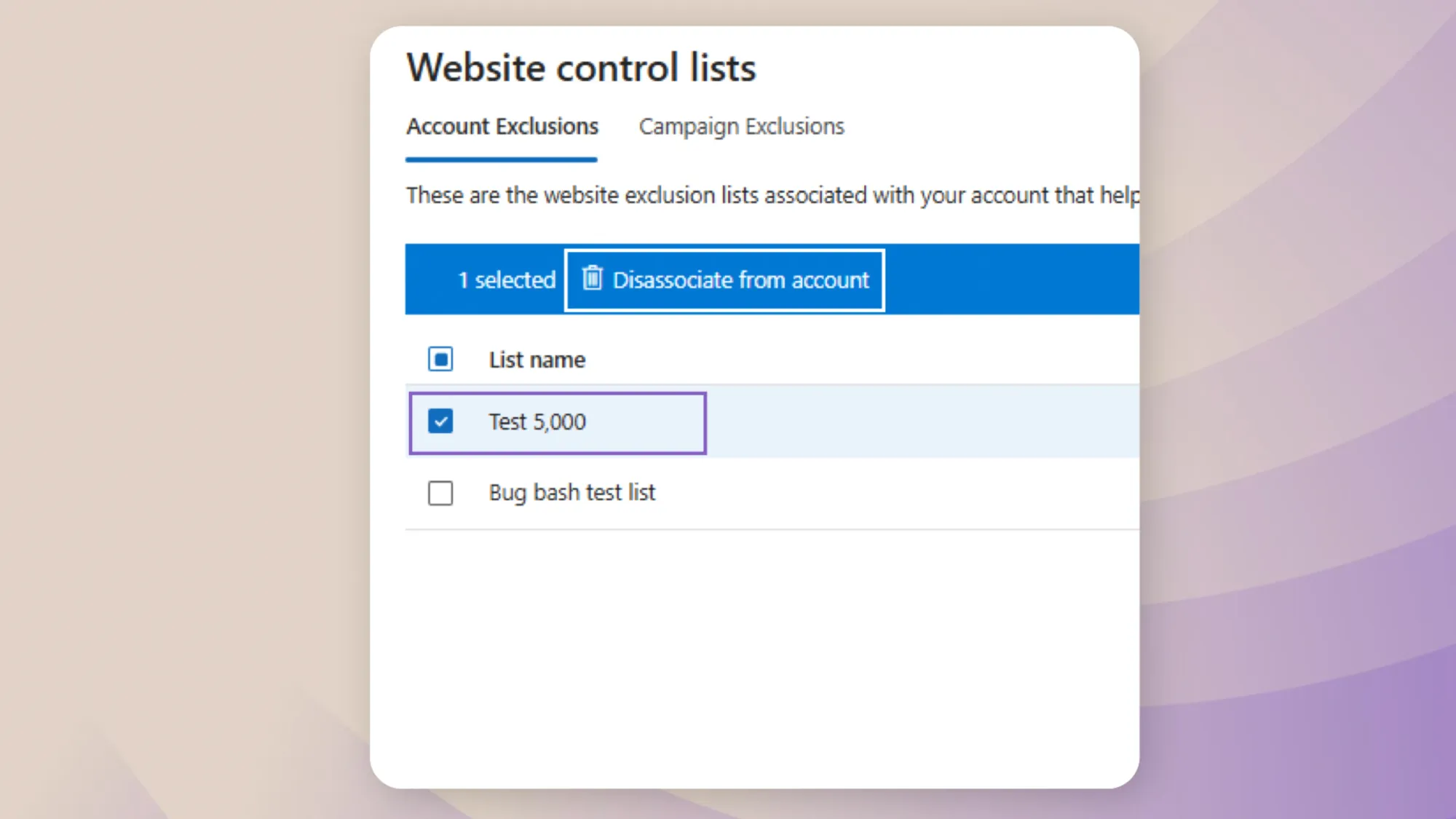
Microsoft Advertising announced comprehensive updates to its website control capabilities, introducing streamlined exclusion management systems that allow advertisers to block up to 10,000 websites per list. The enhancement significantly expands from previous limitations and supports both Audience ads and Search ads across all markets.
The announcement, shared through LinkedIn by Navah Hopkins, Microsoft Ads Liaison and Top 25 PPC Influencer, detailed three major control features. These include centralized website exclusion management across accounts and campaigns, bulk application capabilities for multiple campaigns simultaneously, and expanded capacity limits that represent a substantial increase in advertiser control options.
Subscribe the PPC Land newsletter ✉️ for similar stories like this one. Receive the news every day in your inbox. Free of ads. 10 USD per year.
"Centrally manage website exclusions across accounts and campaigns," Hopkins stated in her LinkedIn post. The system enables advertisers to "apply exclusions in bulk to multiple campaigns at once" while scaling operations with the ability to "add up to 10,000 websites per exclusion list and create up to 100 exclusion lists per account."
The platform's new architecture introduces hierarchical management levels spanning manager accounts, individual accounts, and campaign-specific controls. At the manager account level, advertisers can create up to three website control lists that apply across all associated accounts. Individual accounts support up to 100 website control lists, each containing up to 10,000 domains. Campaign-level implementations allow direct application of account-level lists through campaign settings.
Microsoft's system maintains existing ad group level functionality while recommending campaign-level management for operational consistency. The documentation explicitly states that "exclusions can still be added at the ad group level" but emphasizes campaign-level coordination for streamlined administration.
Technical specifications reveal broad compatibility across campaign types. Website exclusion lists support Audience ads and Search ads through the Microsoft Advertising UI Desktop interface. All markets receive access to these features with English language support. Mobile app reporting extends coverage to Search, Audience, Performance Max, Shopping, App install, and Lodging campaign types.
The targeted website list feature operates under open beta status, requiring advertiser requests to Microsoft representatives for access. This functionality enables precise partner website selection for ad placement while maintaining automatic serving on Microsoft properties. The system allows up to 5,000 domains per targeted list, providing granular control over brand-safe site selection.
Mobile app traffic management represents another significant advancement in the updated control suite. The platform now provides individual app reporting within website URL publisher reports, including new data columns for mobile web URL, mobile bundle identification, and mobile app names. Advertisers receive mobile bundle IDs for targeting or exclusion purposes at account, campaign, and ad group levels.
The mobile app enhancement addresses previous limitations where advertisers relied on broad app store URL exclusions like play.google.com. Microsoft recommends removing these blanket exclusions to enable individual app performance monitoring and selective exclusion decisions. "Mobile bundle IDs can be used for targeted websites or exclusions at the account, campaign or ad group level," the documentation specifies.
Brand safety benefits constitute a primary driver for the enhanced website control features. The system ensures ads appear only in environments aligning with brand values while improving performance through focused high-performing website targeting. Enhanced targeting capabilities enable fine-tuned campaign reach by specifying exact ad placement locations.
Implementation guidance details three distinct management approaches. Account-level control provides manager account-level list oversight alongside custom exclusion list creation for specific campaigns. Campaign-level application enables direct exclusion list implementation from account-level repositories through campaign settings. Ad group level maintains individual website addition capabilities, though Microsoft recommends campaign-level management for consistency.
The rollout addresses advertiser demands for greater transparency and control in automated advertising environments. Microsoft's approach contrasts with industry trends toward increased automation at the expense of advertiser visibility. Performance Max campaigns on Microsoft Advertising have incorporated similar control enhancements, including pilot programs for brand exclusions.
Website exclusion list compatibility spans multiple technical implementation methods. Advertisers can create and manage lists through the Feed Management Tool interface, Google Import functionality, and Microsoft's bulk API integration. Future enhancements include scheduled feed uploads from URL sources, expanding automation capabilities while maintaining advertiser control.
The manager account setup requires navigation through content suitability settings to access website exclusion list creation tools. Account-level implementations support both manager account-level list review and campaign-specific list development. Campaign settings integration enables direct list application through advanced settings configurations.
Ad group level exclusions maintain override capabilities for campaign-level settings. The documentation notes that "adding websites at the ad group level will override any individual sites that are added at the campaign level," providing granular control when needed. However, manager account, account, and campaign level website exclusion lists cannot apply to specific ad groups.
Targeted website lists operate exclusively at the account level without manager account creation options. The feature requires navigation to content suitability settings, followed by website control lists selection and campaign inclusions tab access. List association supports both checkbox selection with bulk campaign application and individual list management through dedicated interfaces.
The enhanced mobile app reporting system displays individual app delivery data within existing website URL publisher reports. New reporting columns include mobile web URL, mobile bundle identification, and mobile app name data alongside traditional app store URL information. This granular reporting enables informed exclusion decisions based on individual app performance rather than broad category restrictions.
Microsoft's approach to website control list implementation emphasizes existing exclusion preservation. Current campaign and ad group level exclusions continue functioning normally, though Microsoft recommends migration to higher-level management for operational efficiency. The transition maintains backwards compatibility while encouraging adoption of streamlined management approaches.
The updates reflect broader industry shifts toward balancing automation with advertiser control. Microsoft's Xandr DSP sunset and focus on AI-driven solutions demonstrates platform consolidation trends, while enhanced website controls provide advertisers with maintained transparency and placement oversight.
Brand safety considerations extend beyond basic exclusion capabilities to encompass content alignment and performance optimization. The system's three-tier approach enables broad brand protection through manager account controls, specific campaign optimization through account-level lists, and granular adjustments through campaign and ad group implementations.
Advertiser implementation timelines vary based on feature selection and technical complexity. Website exclusion lists achieve immediate availability across all markets with English language support. Targeted website lists require Microsoft representative contact for open beta access. Mobile app reporting activates automatically across supported campaign types without additional configuration requirements.
The comprehensive update positions Microsoft Advertising's control capabilities as competitive alternatives to walled garden platforms that prioritize automation over transparency. Enhanced features provide brand safety and measurement verification capabilities while maintaining advertiser oversight of ad placement decisions.
Future development roadmap includes Microsoft Advertising Editor support for bulk website exclusion management, currently available through the Microsoft Advertising API. The platform continues expanding automation capabilities while preserving advertiser control options, reflecting industry demands for balanced automated and manual management approaches.
The website control list enhancements represent Microsoft's commitment to providing advertiser choice in an increasingly automated digital advertising landscape. Enhanced controls enable precise brand protection while leveraging platform automation capabilities for improved campaign performance and operational efficiency.

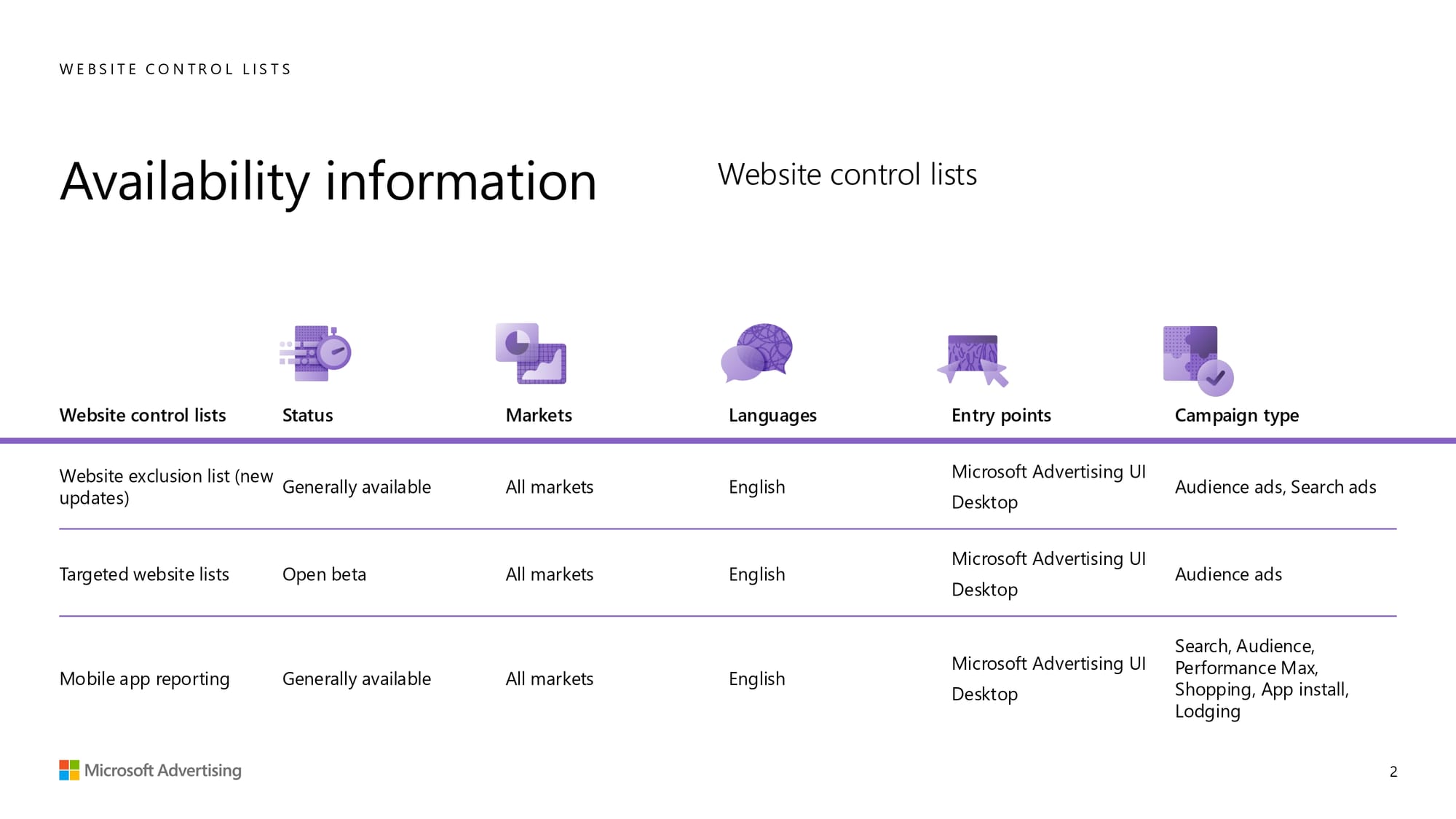
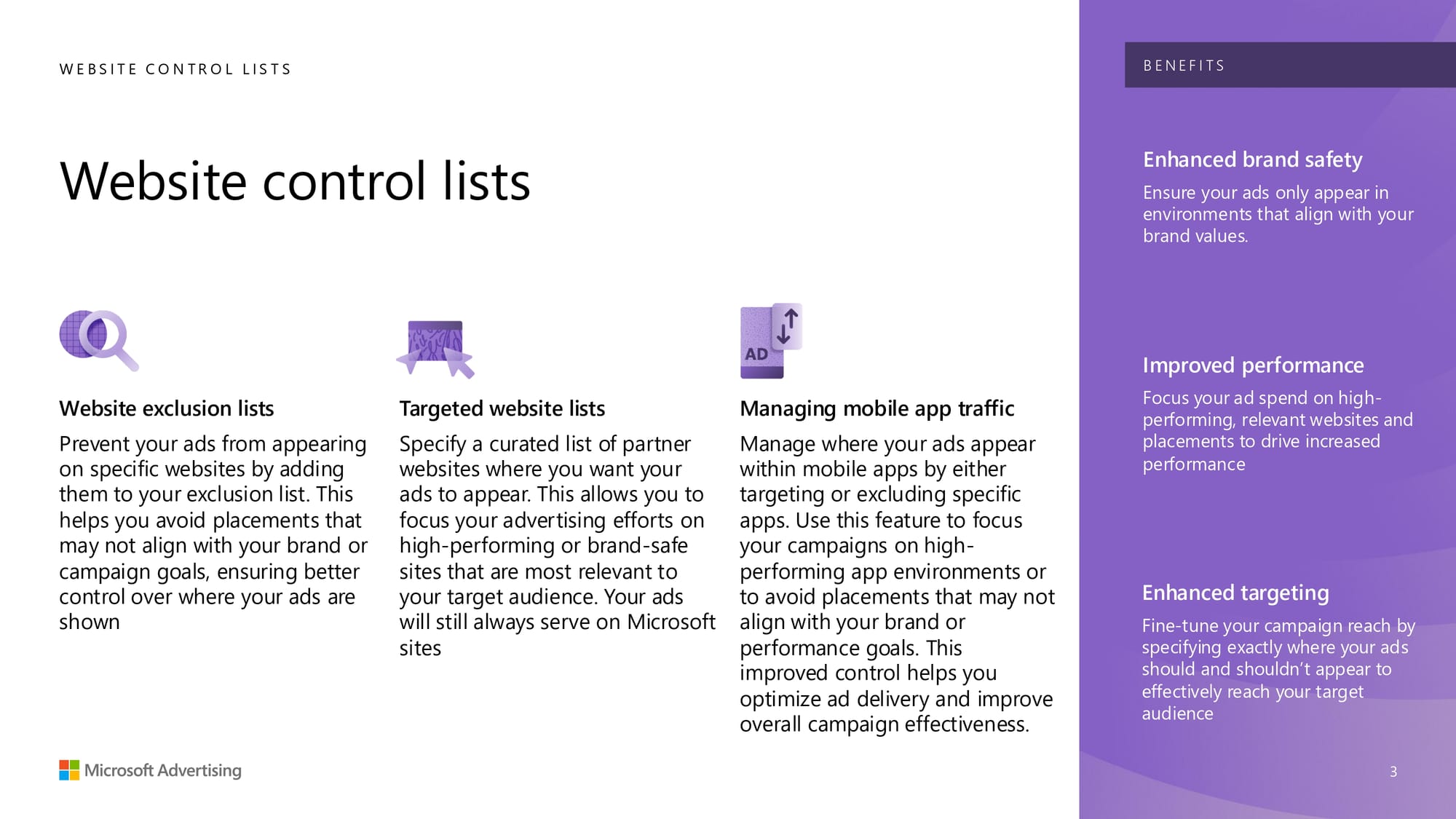

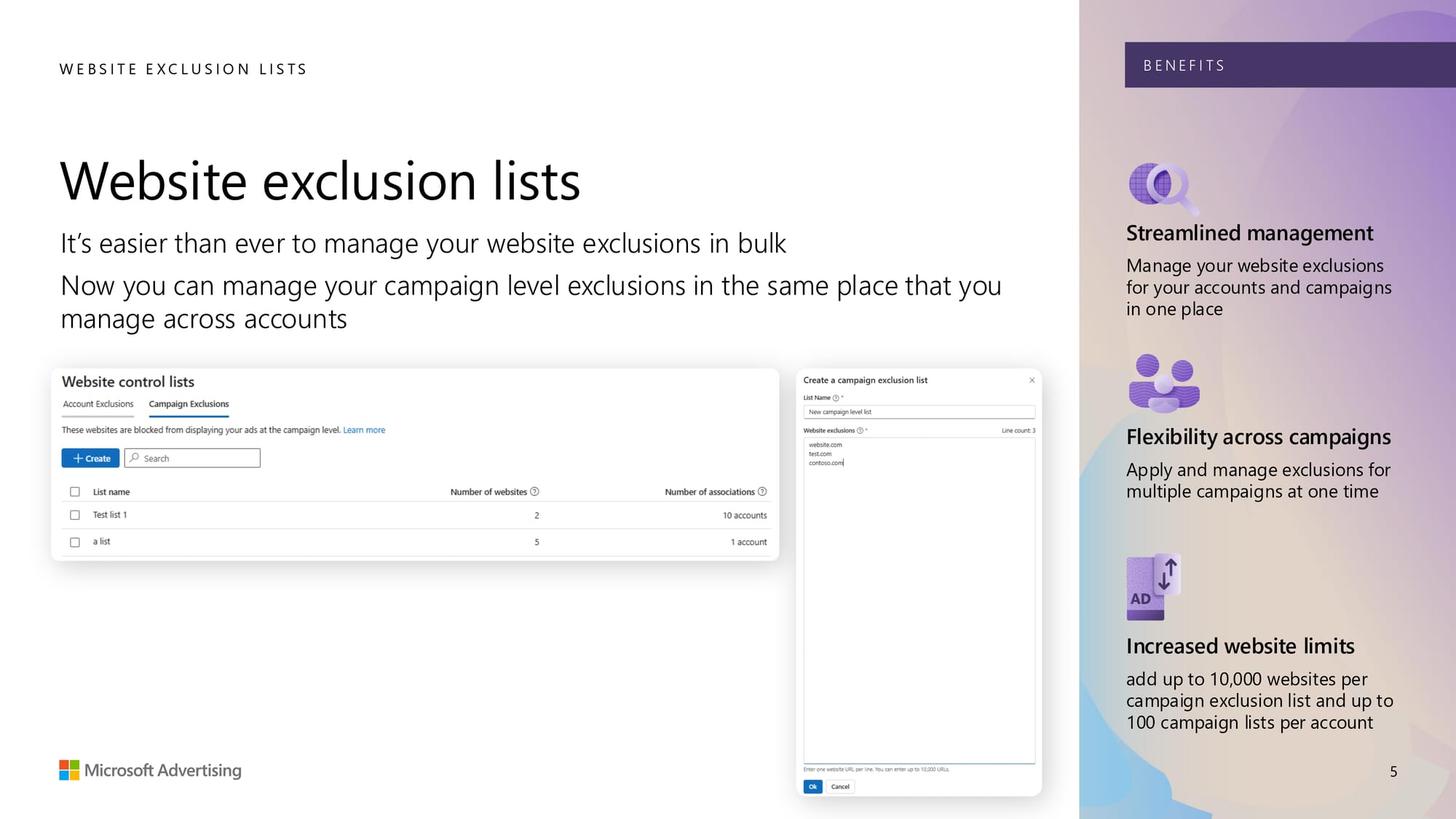
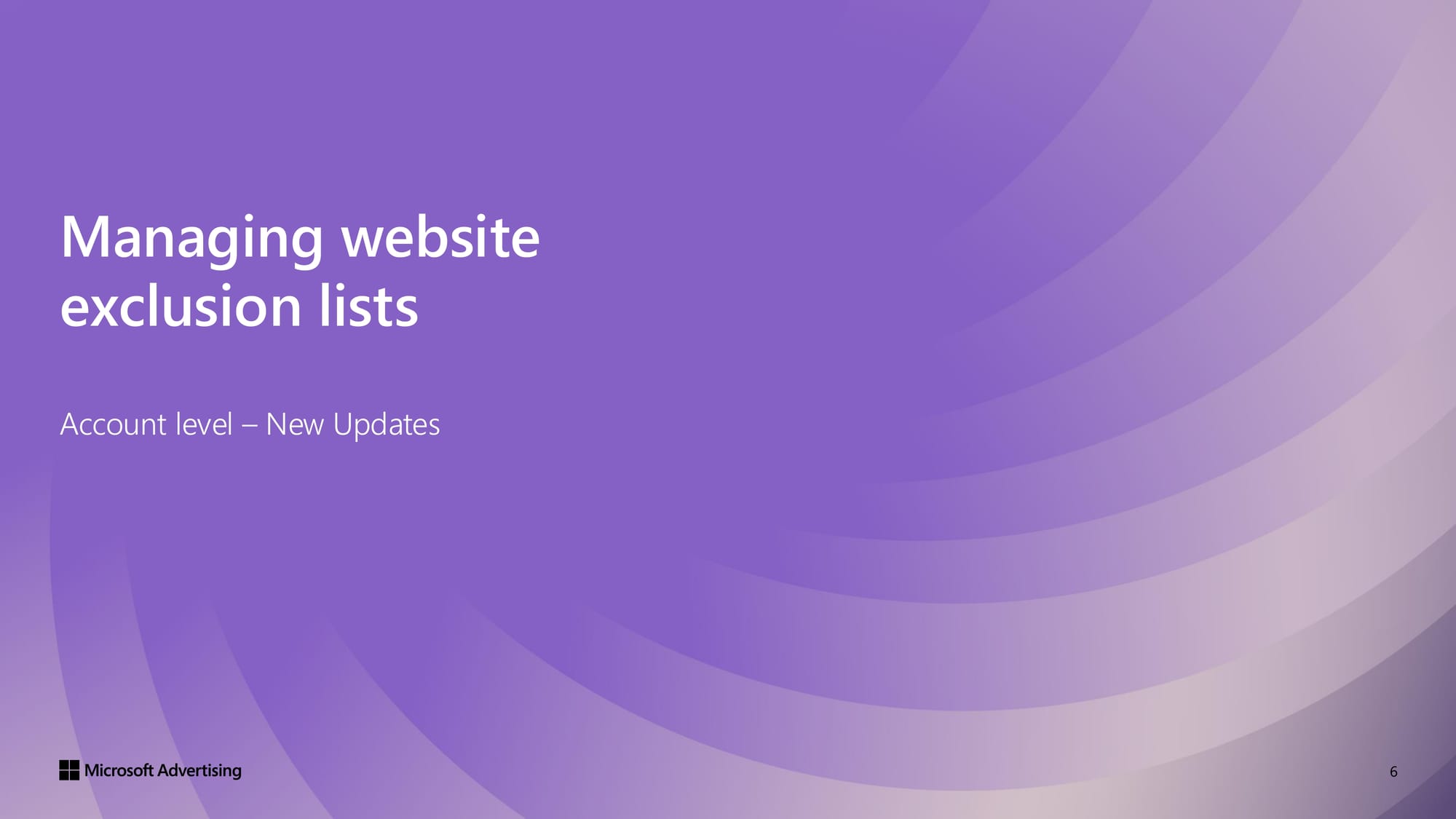
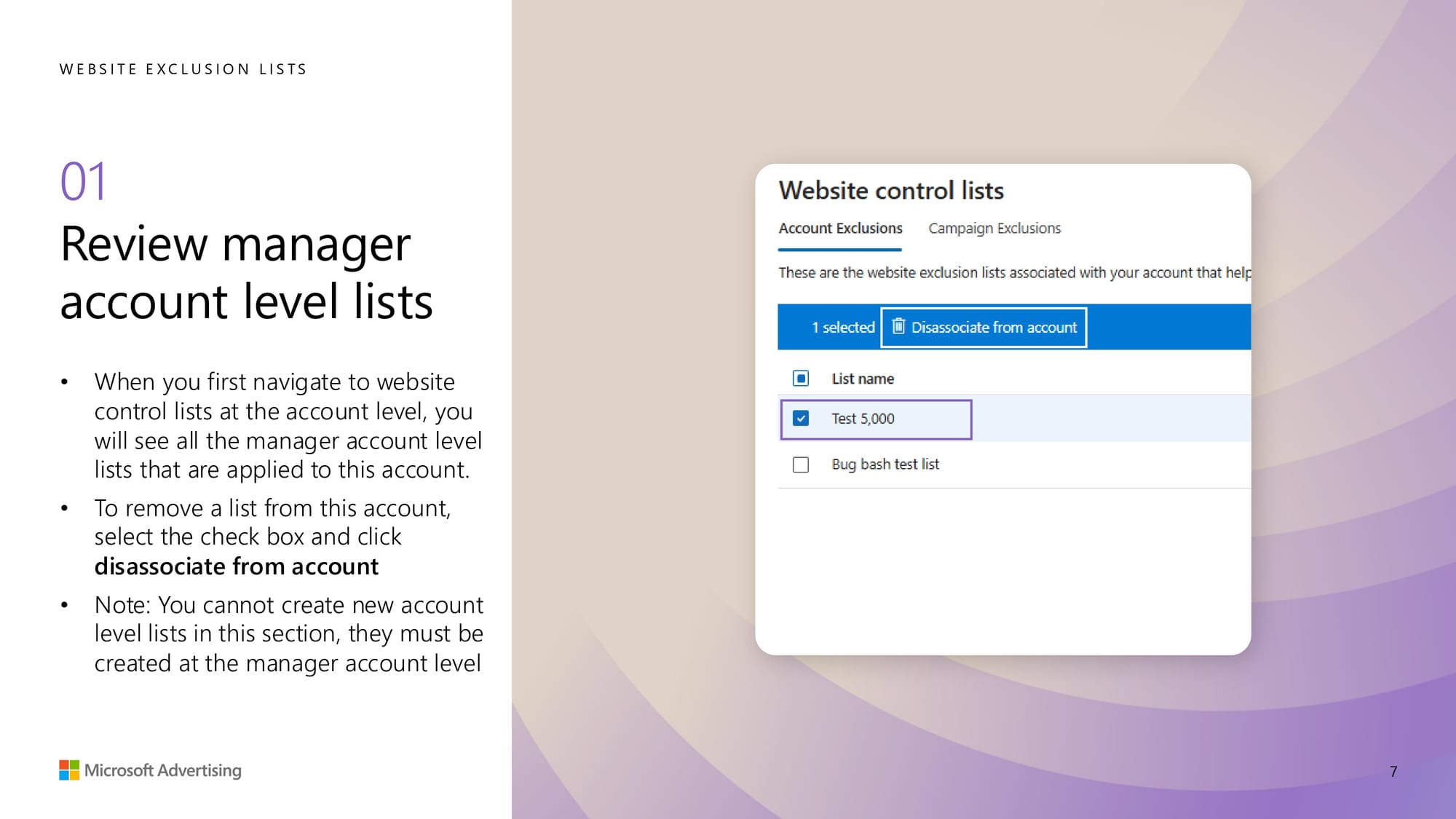
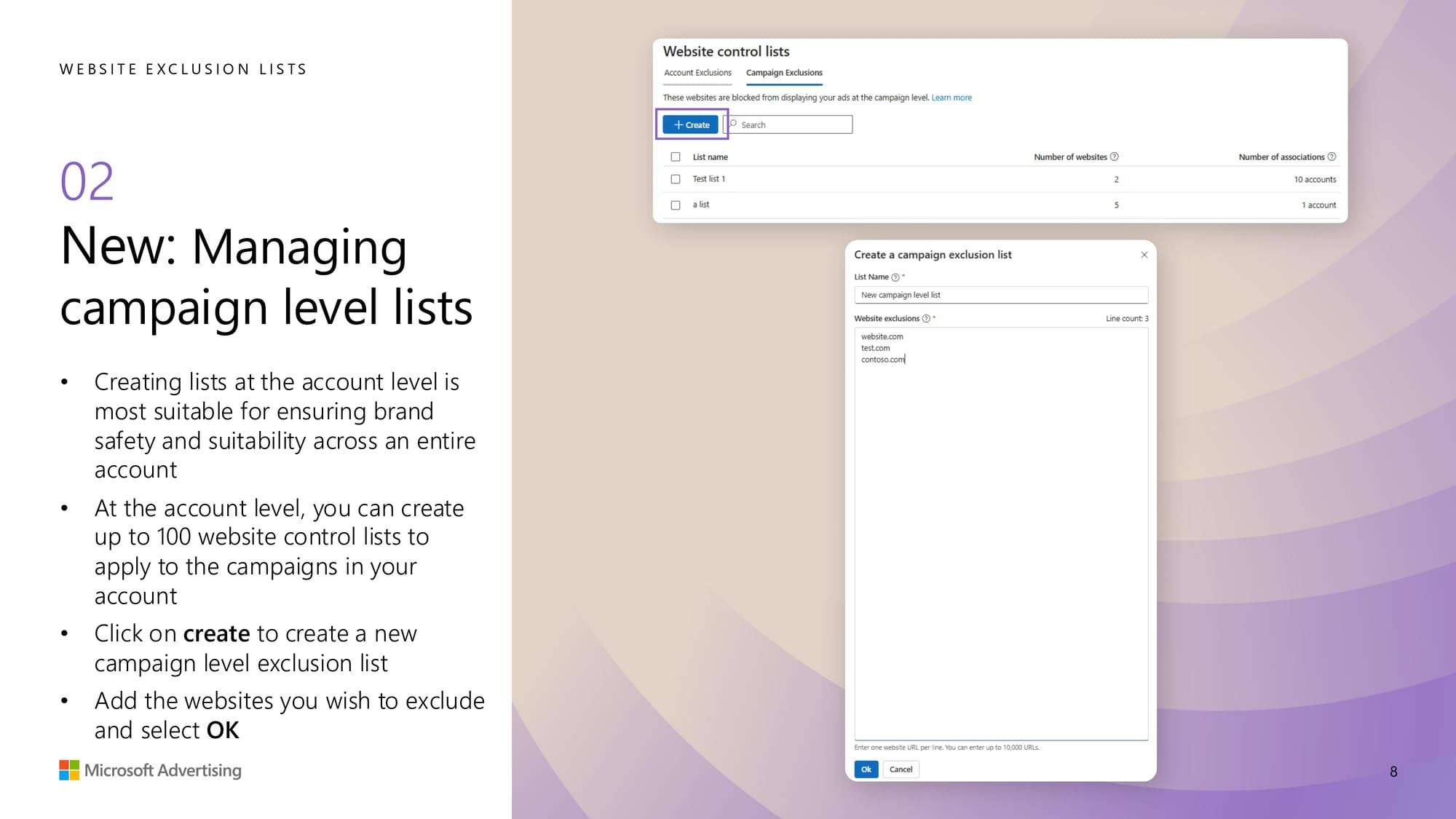

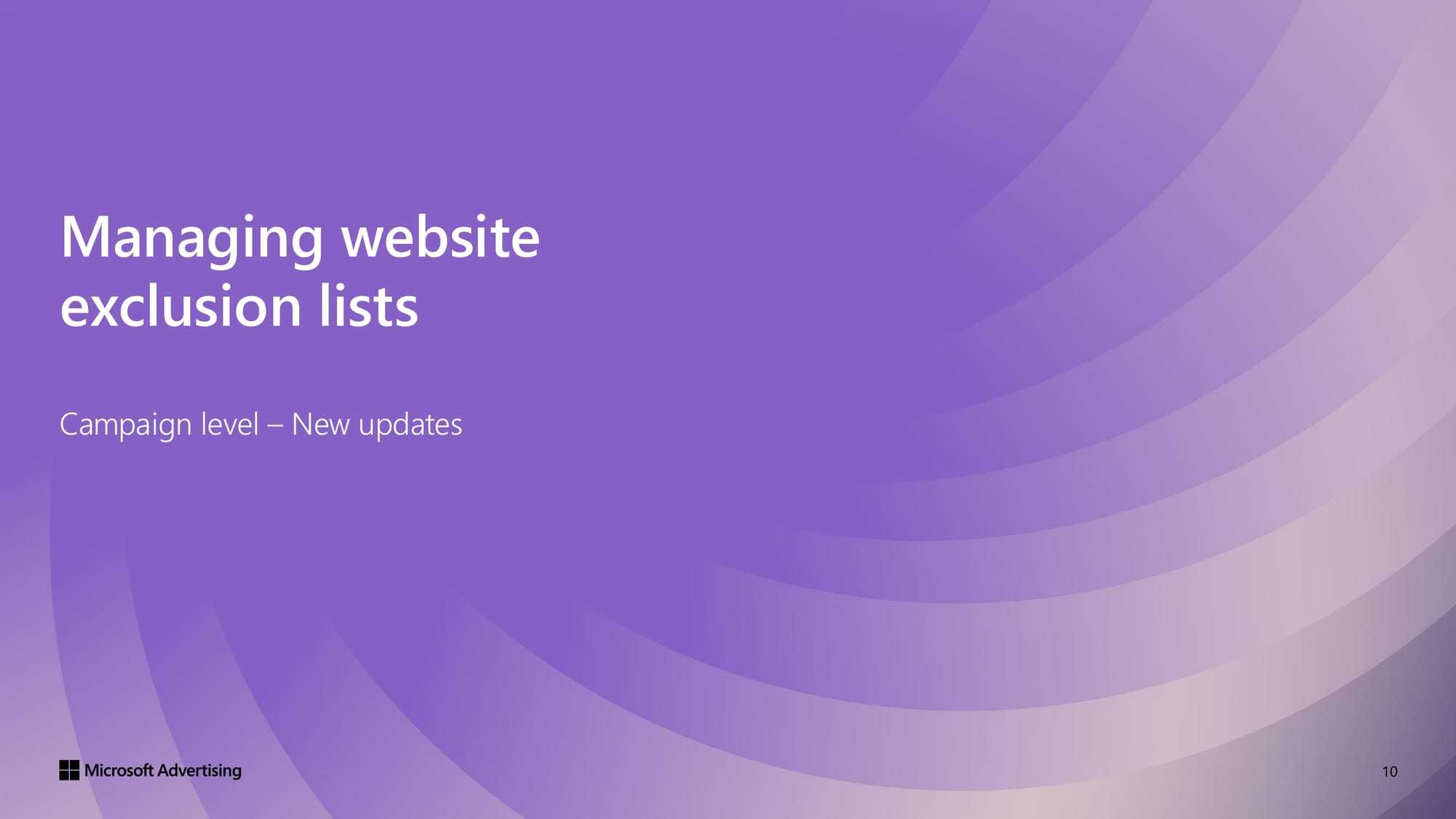
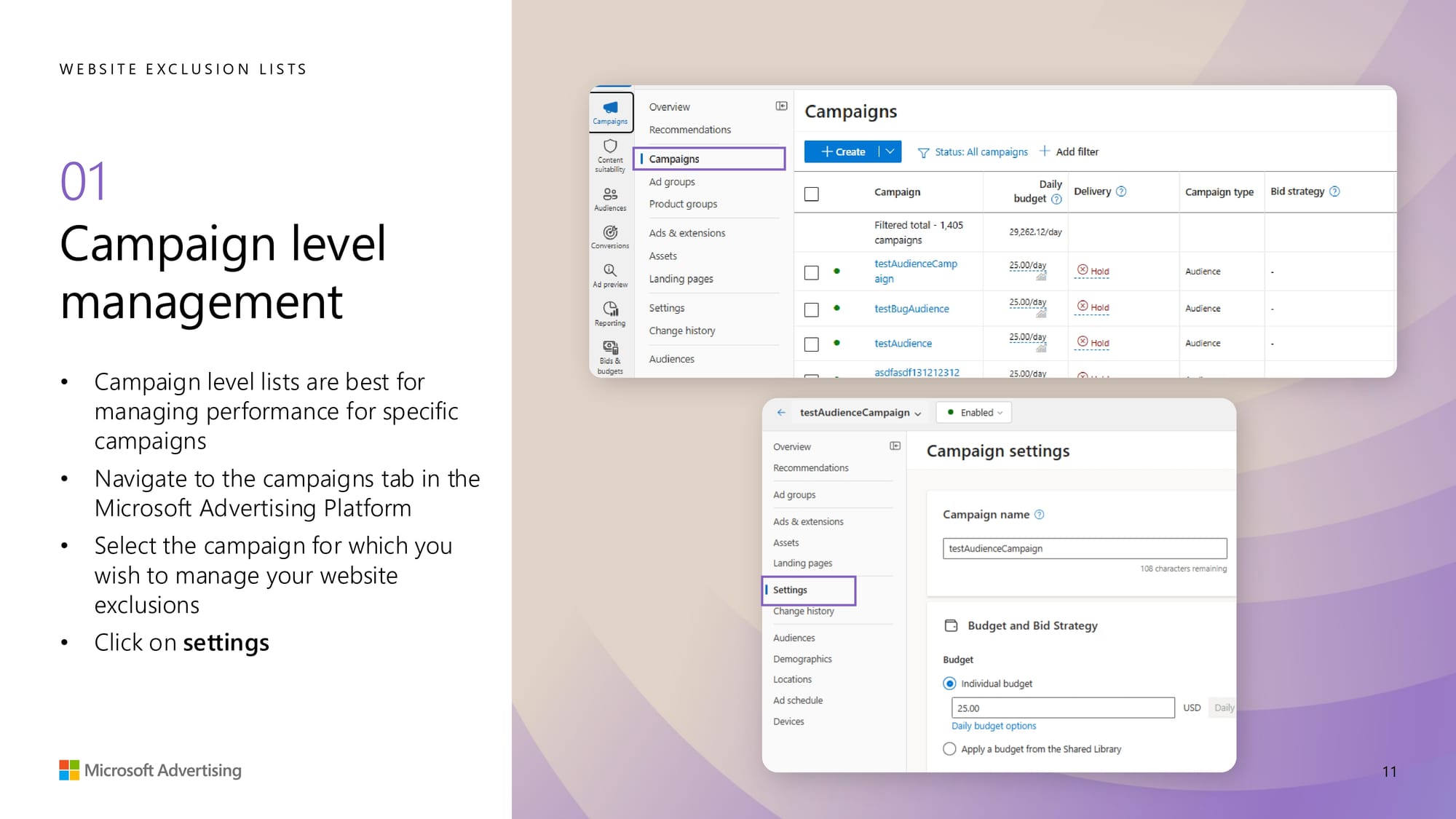
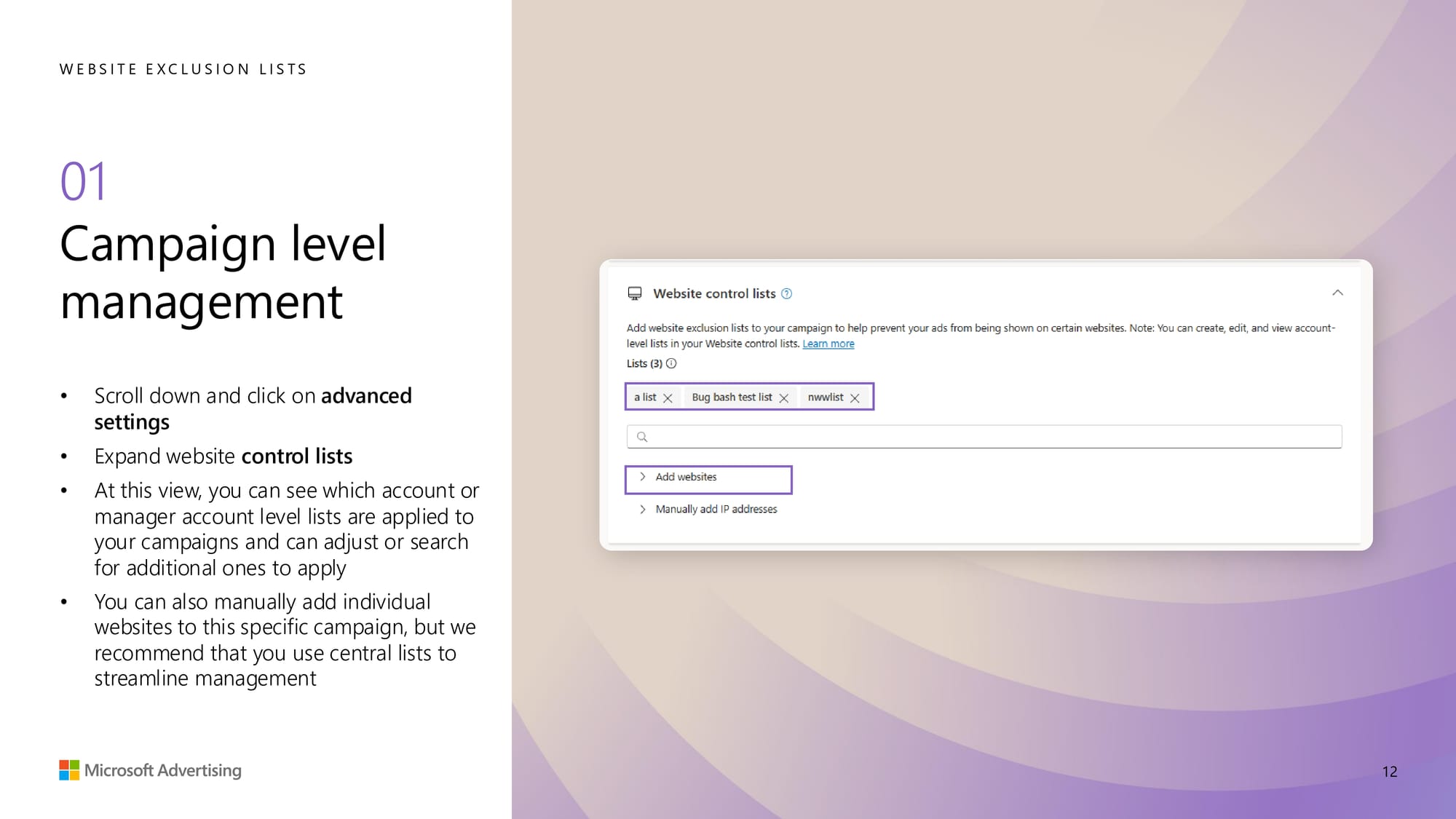
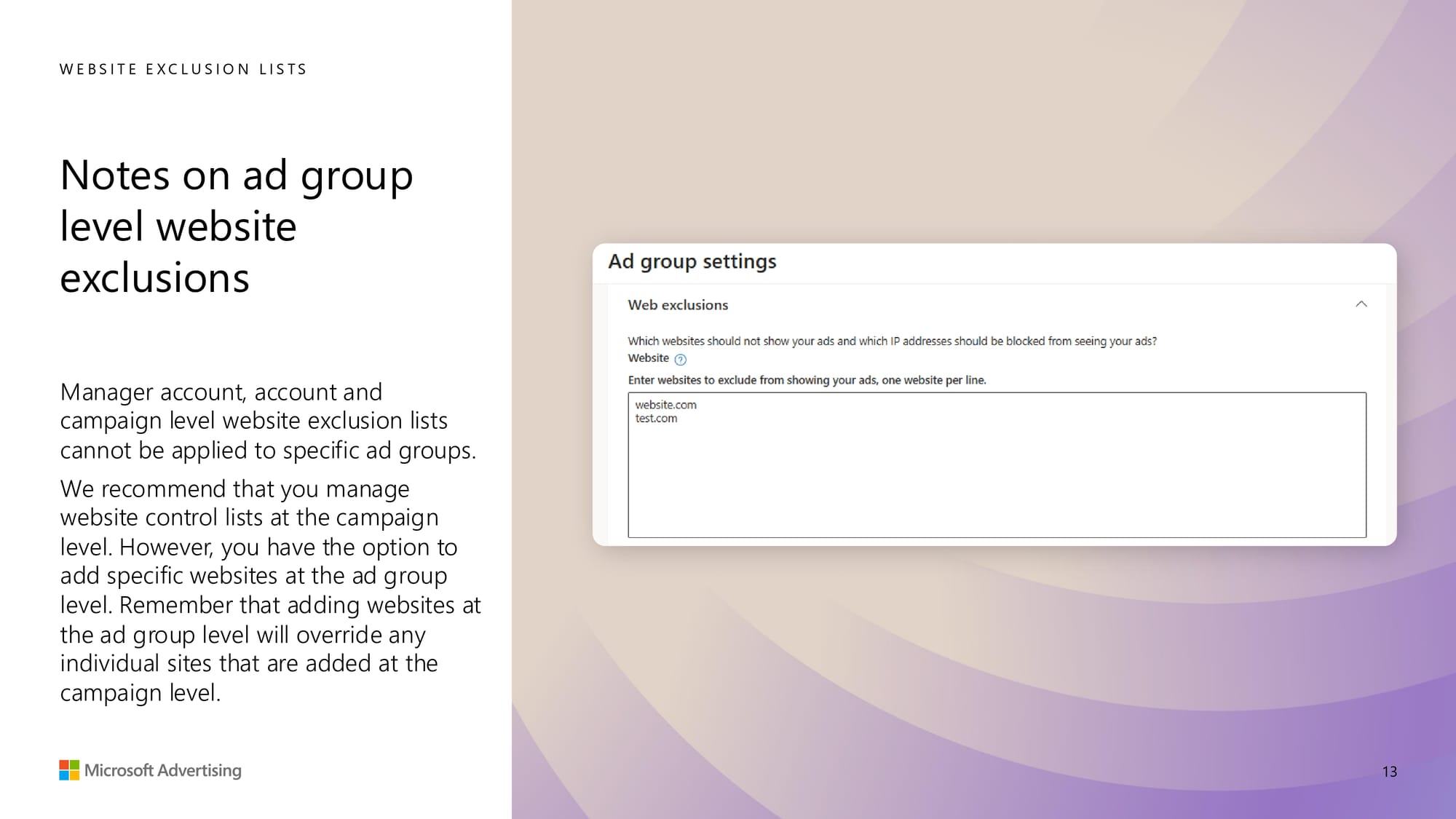
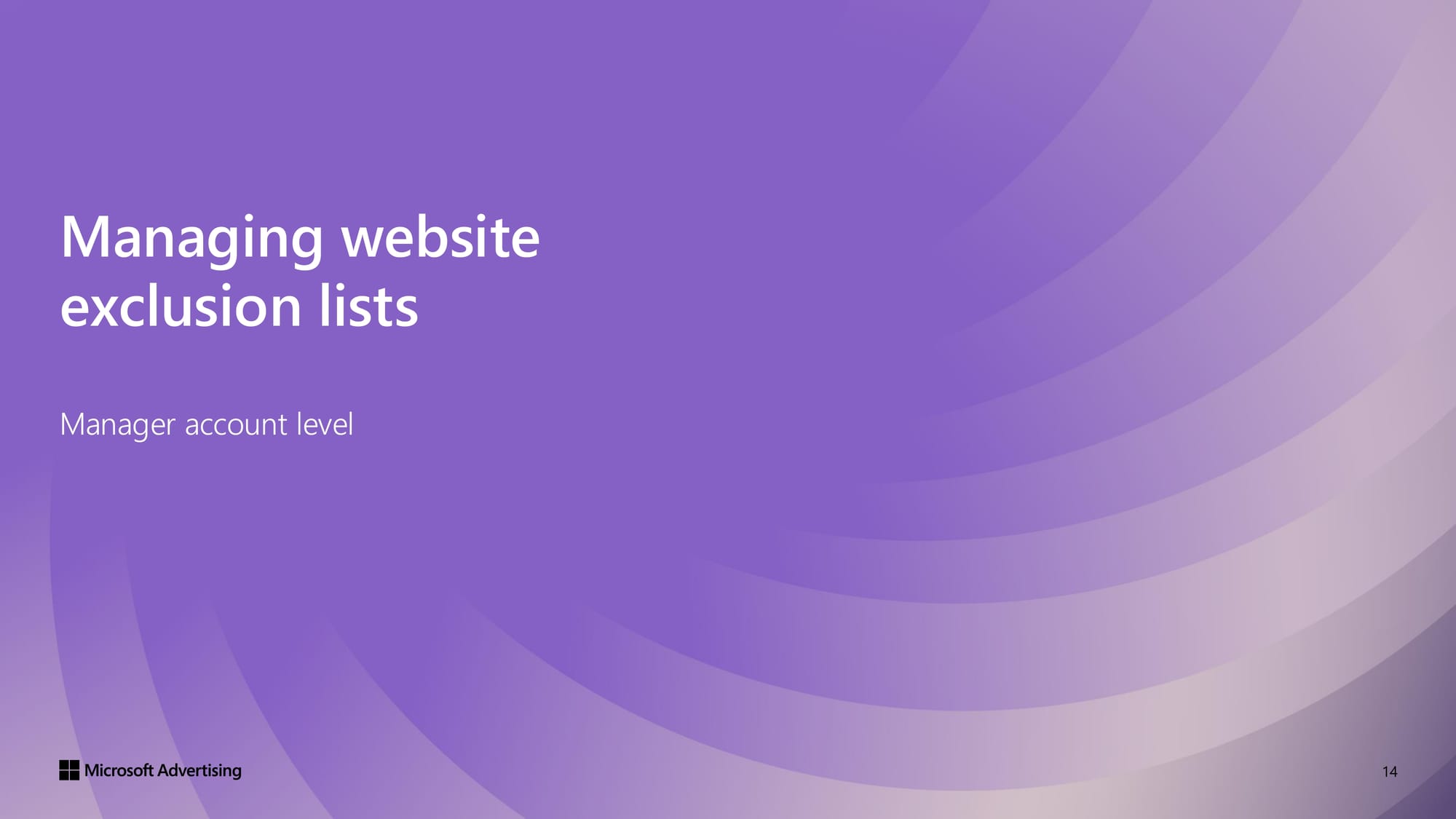
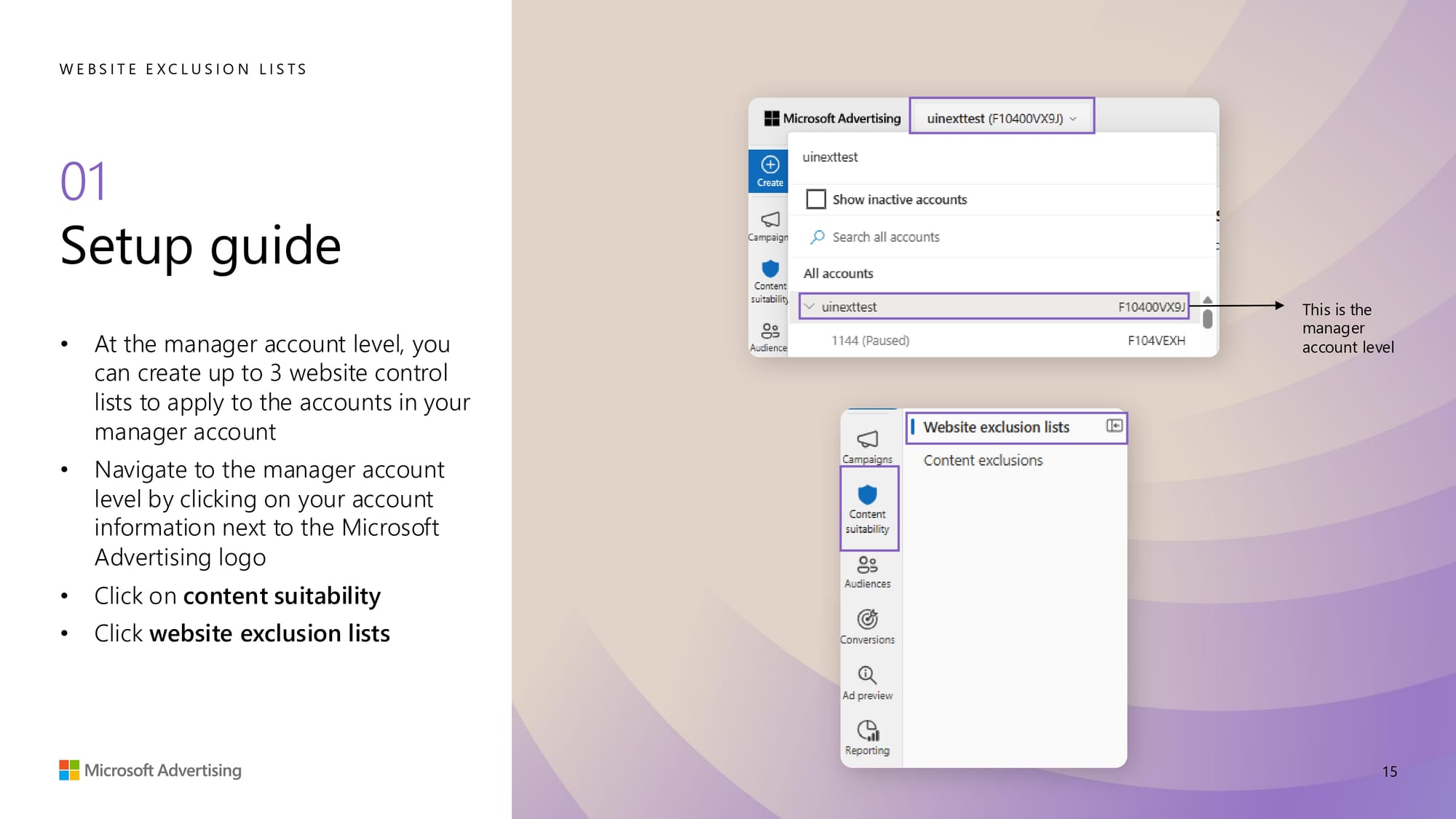
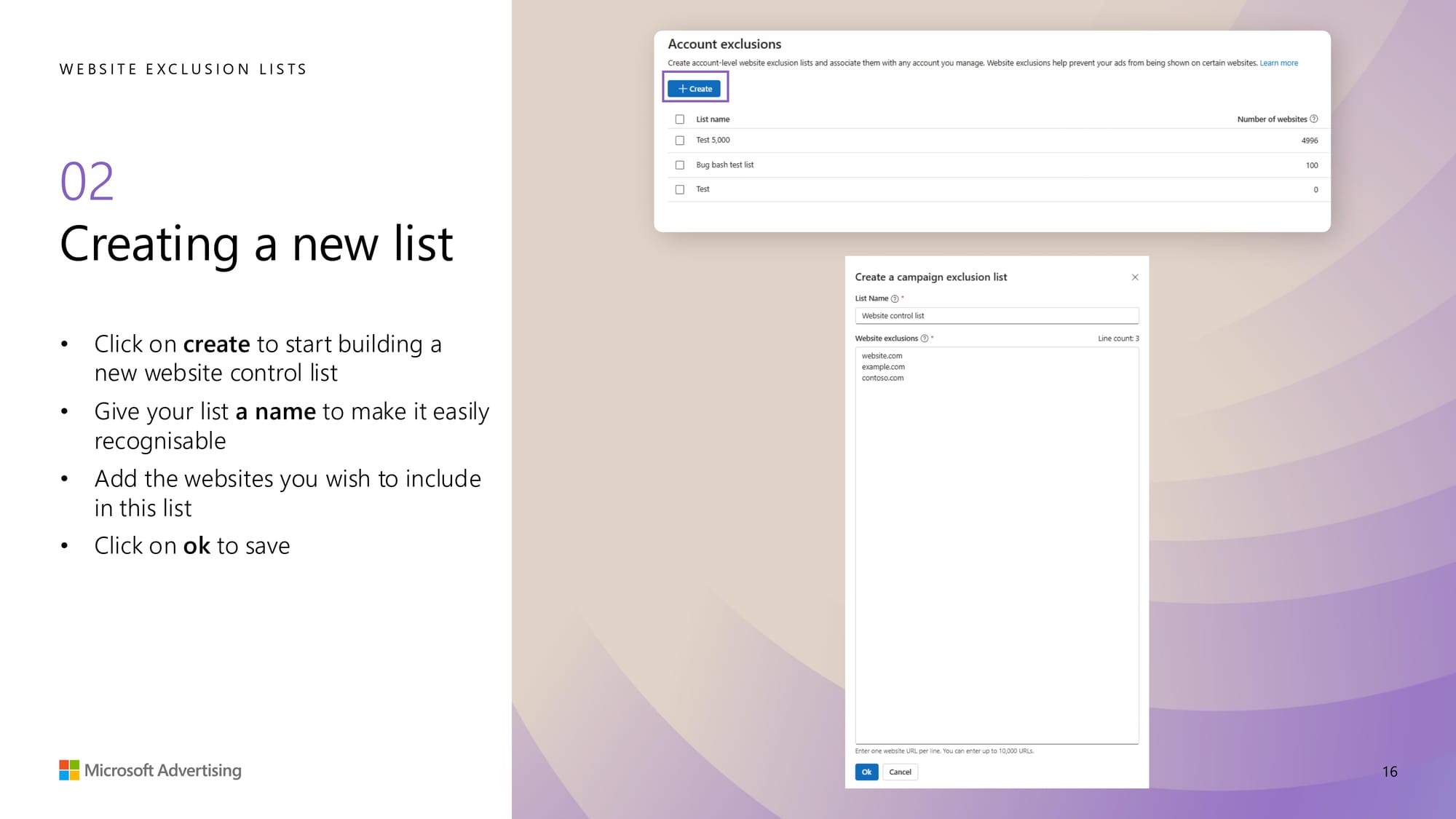
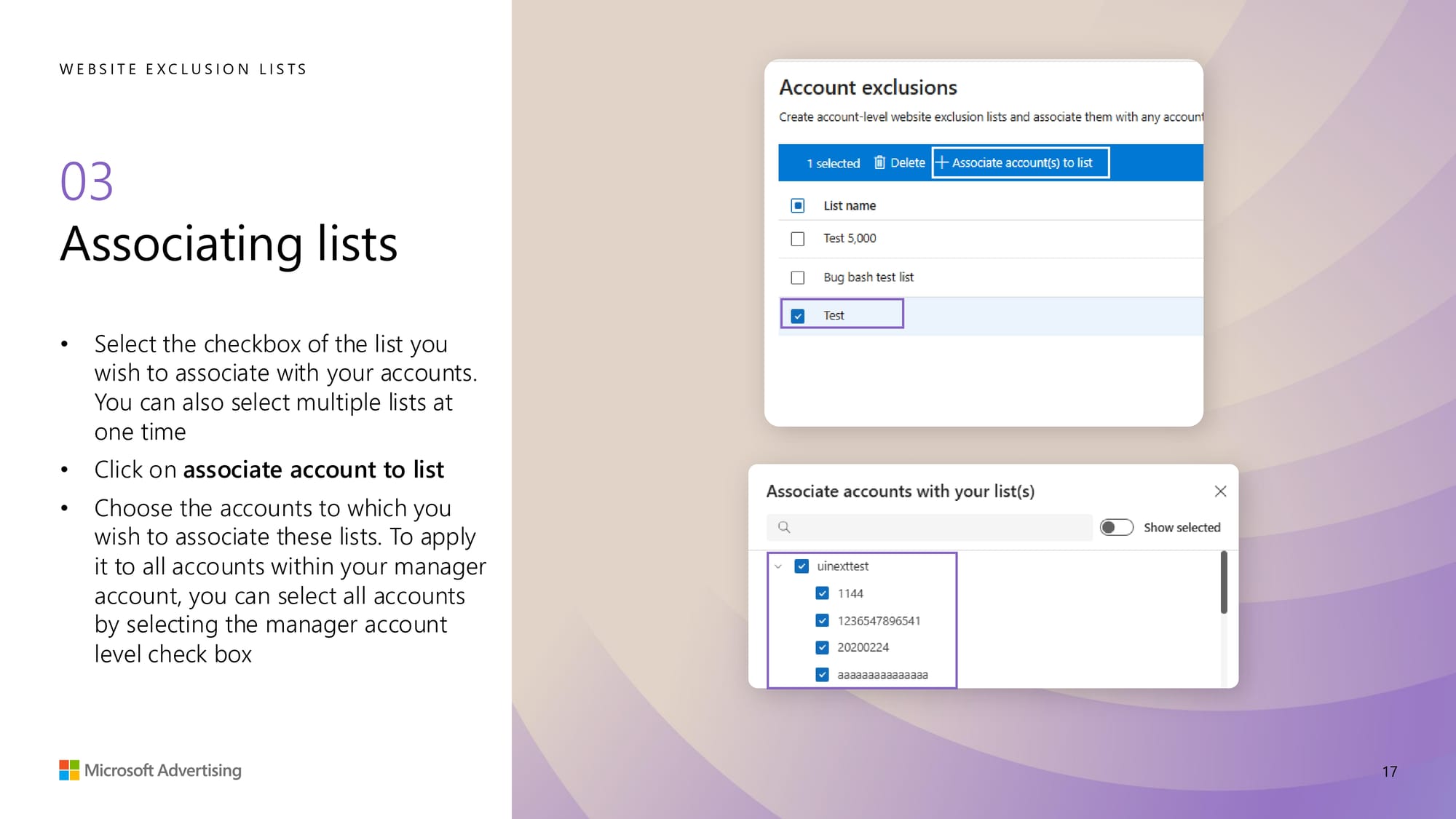

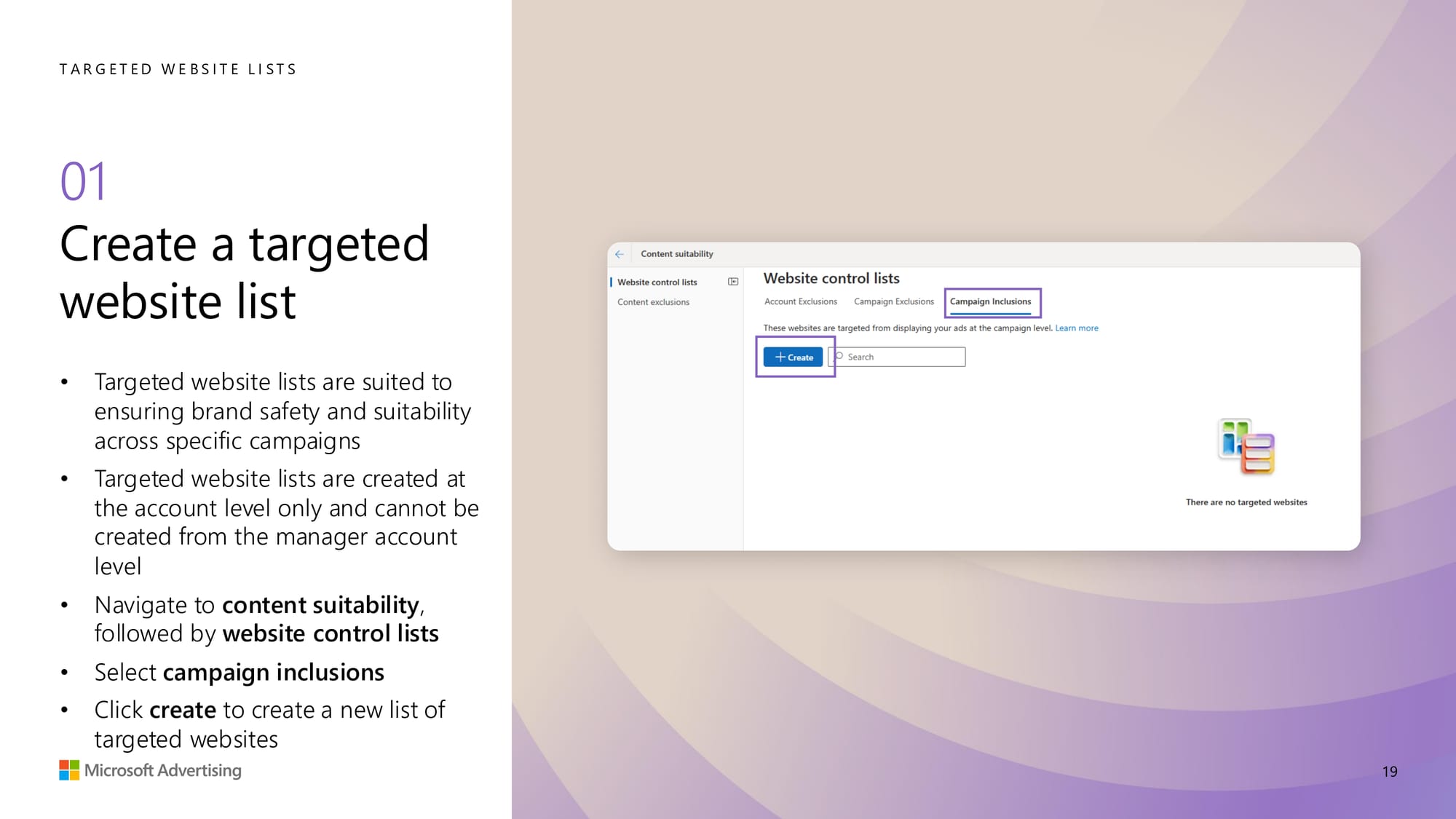
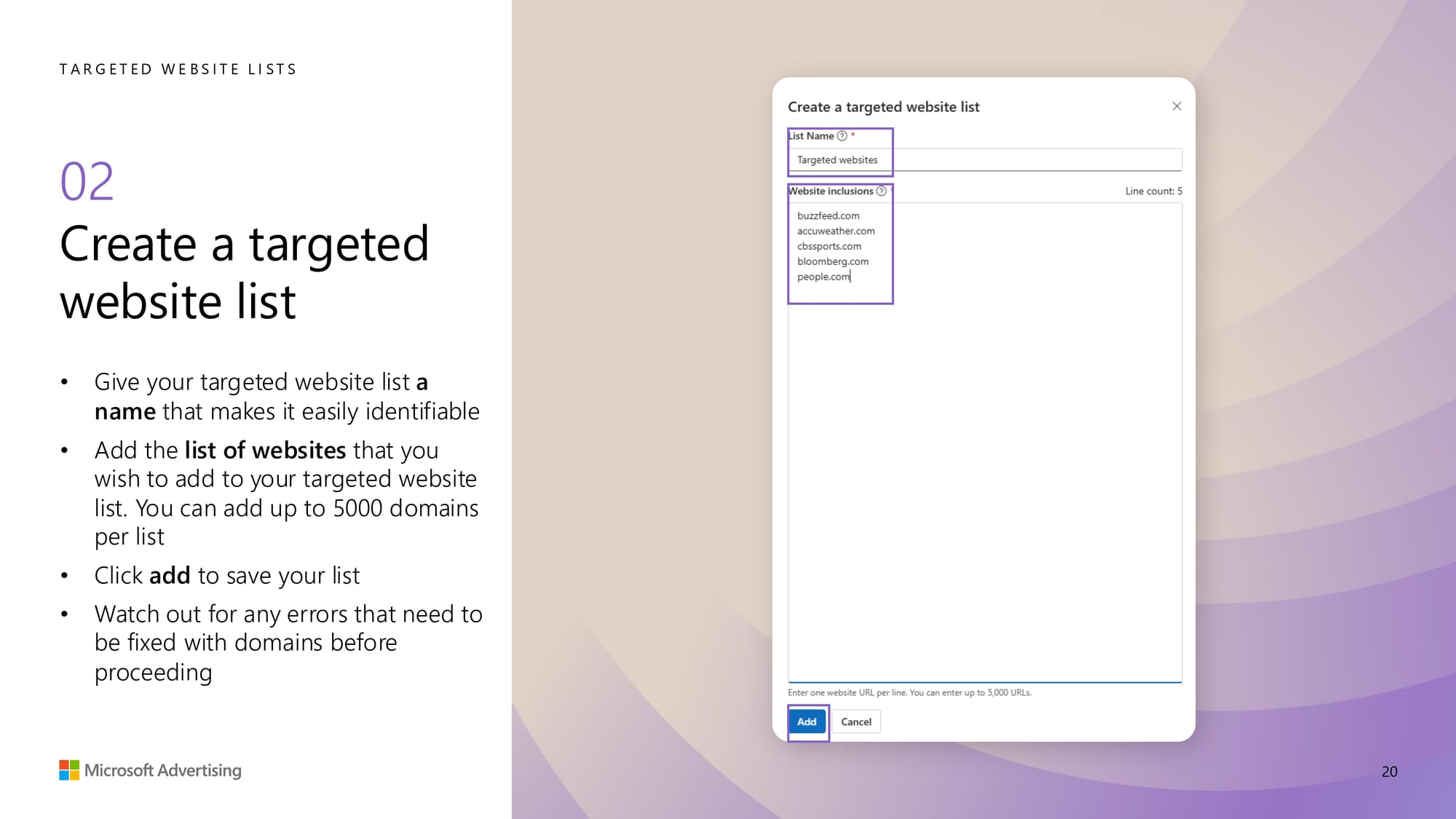

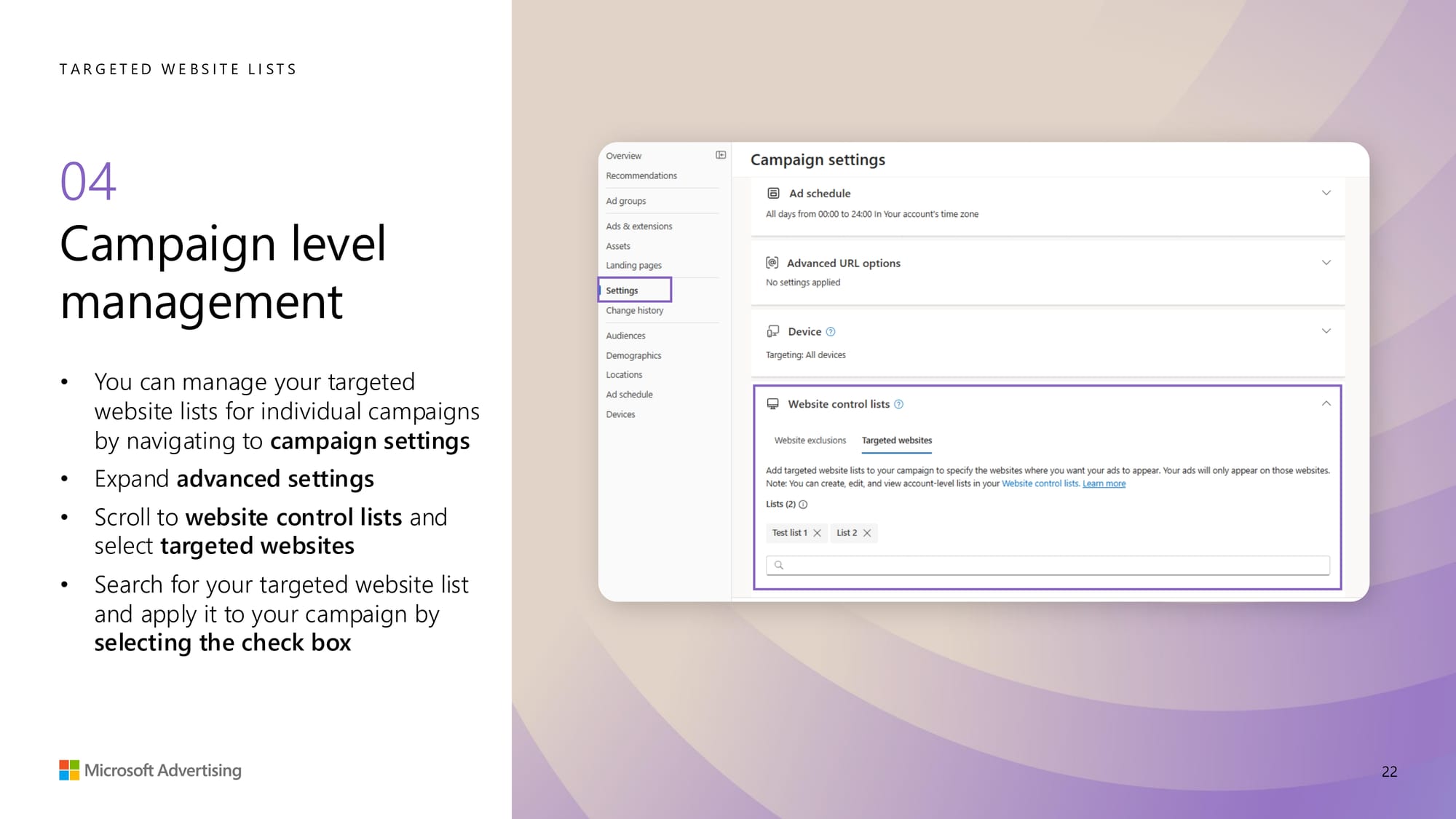

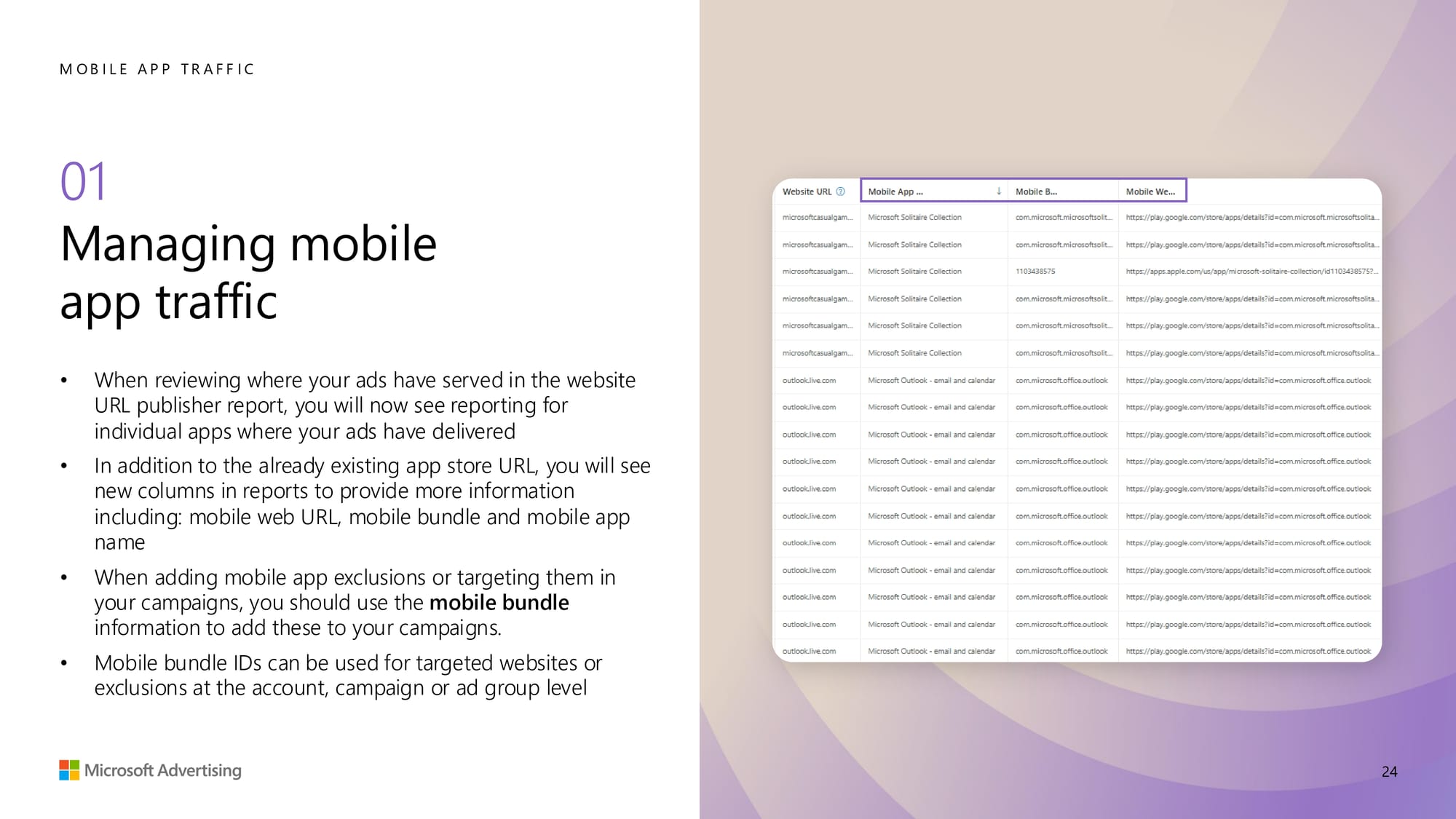
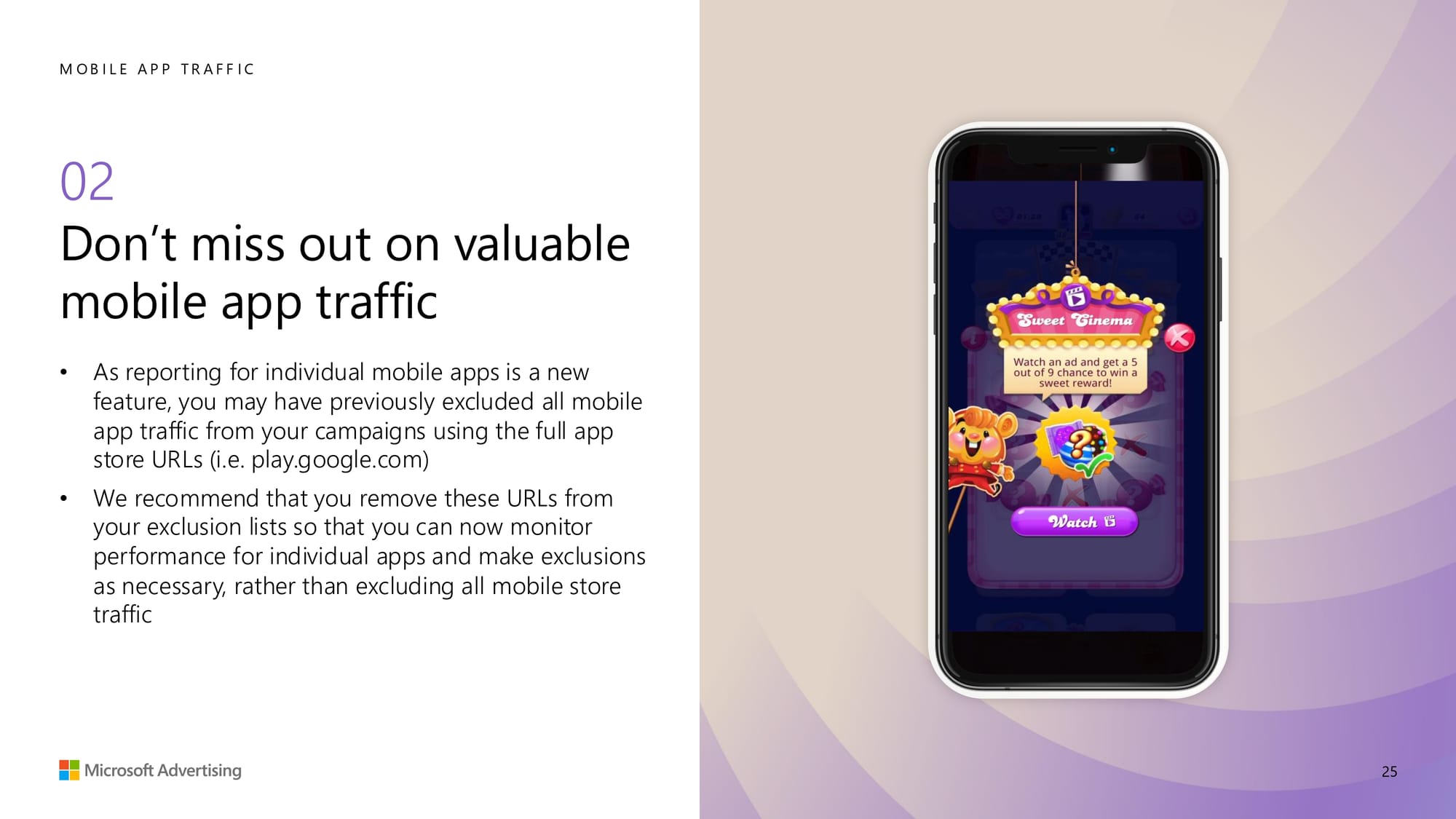

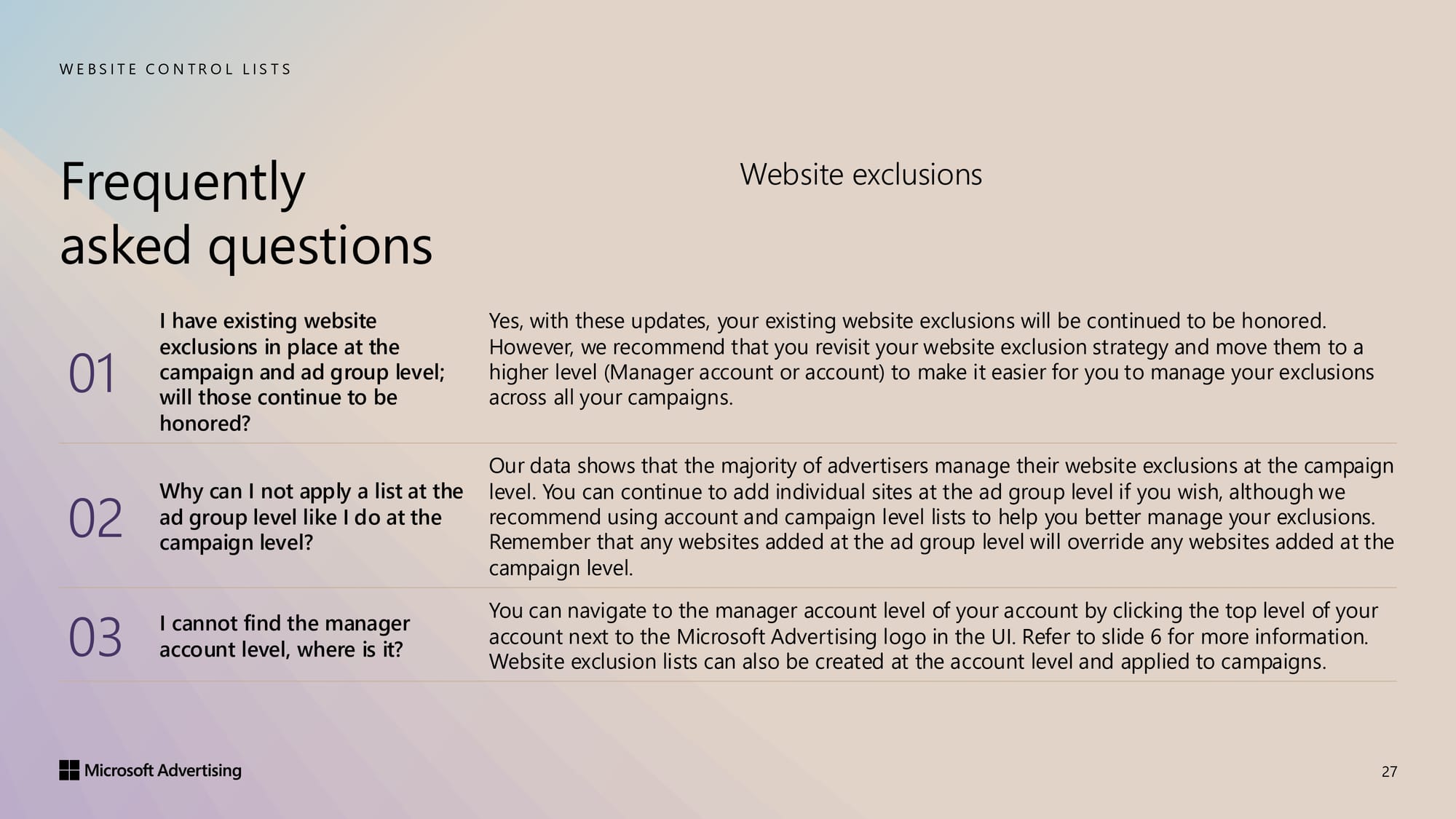
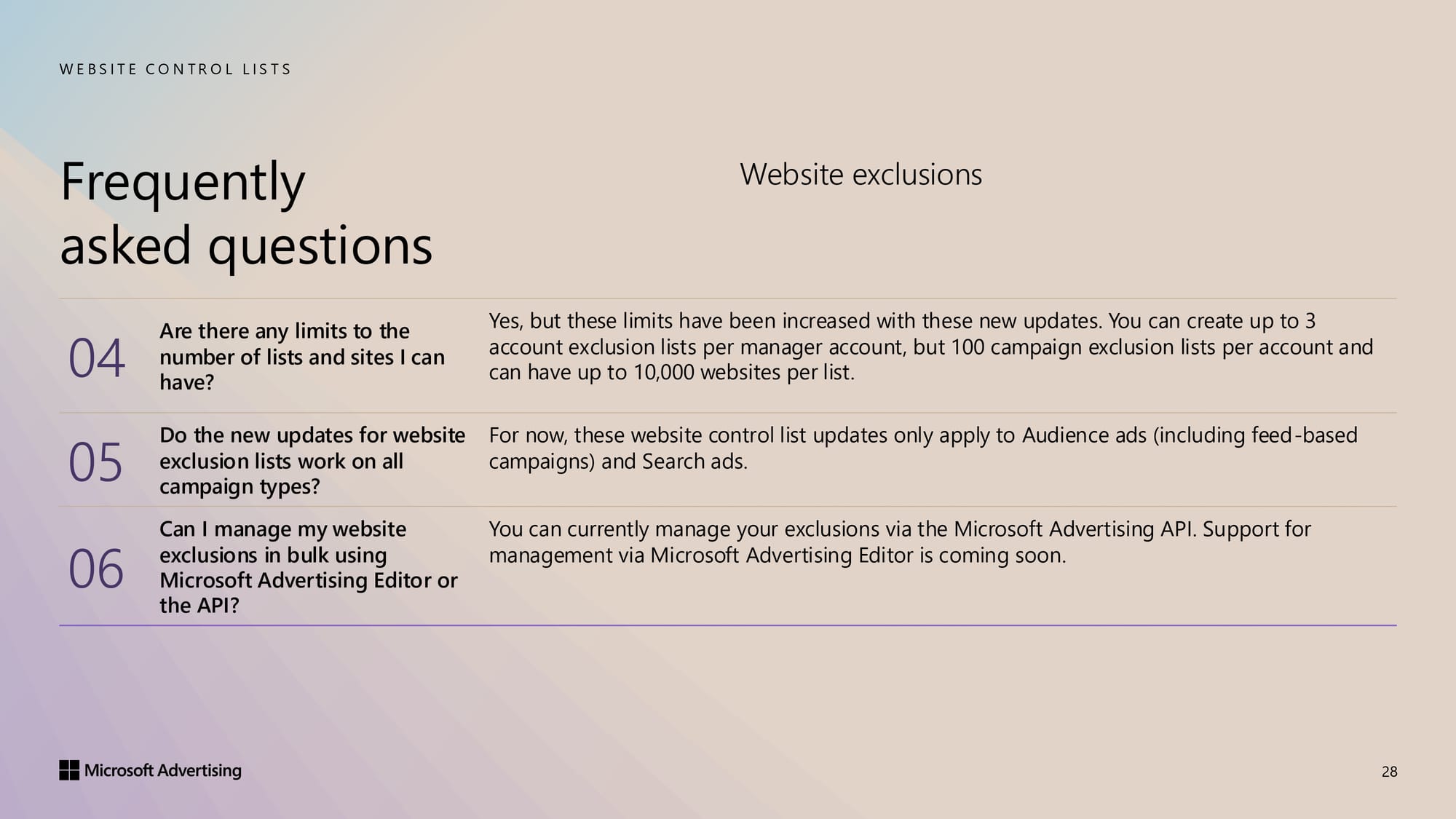

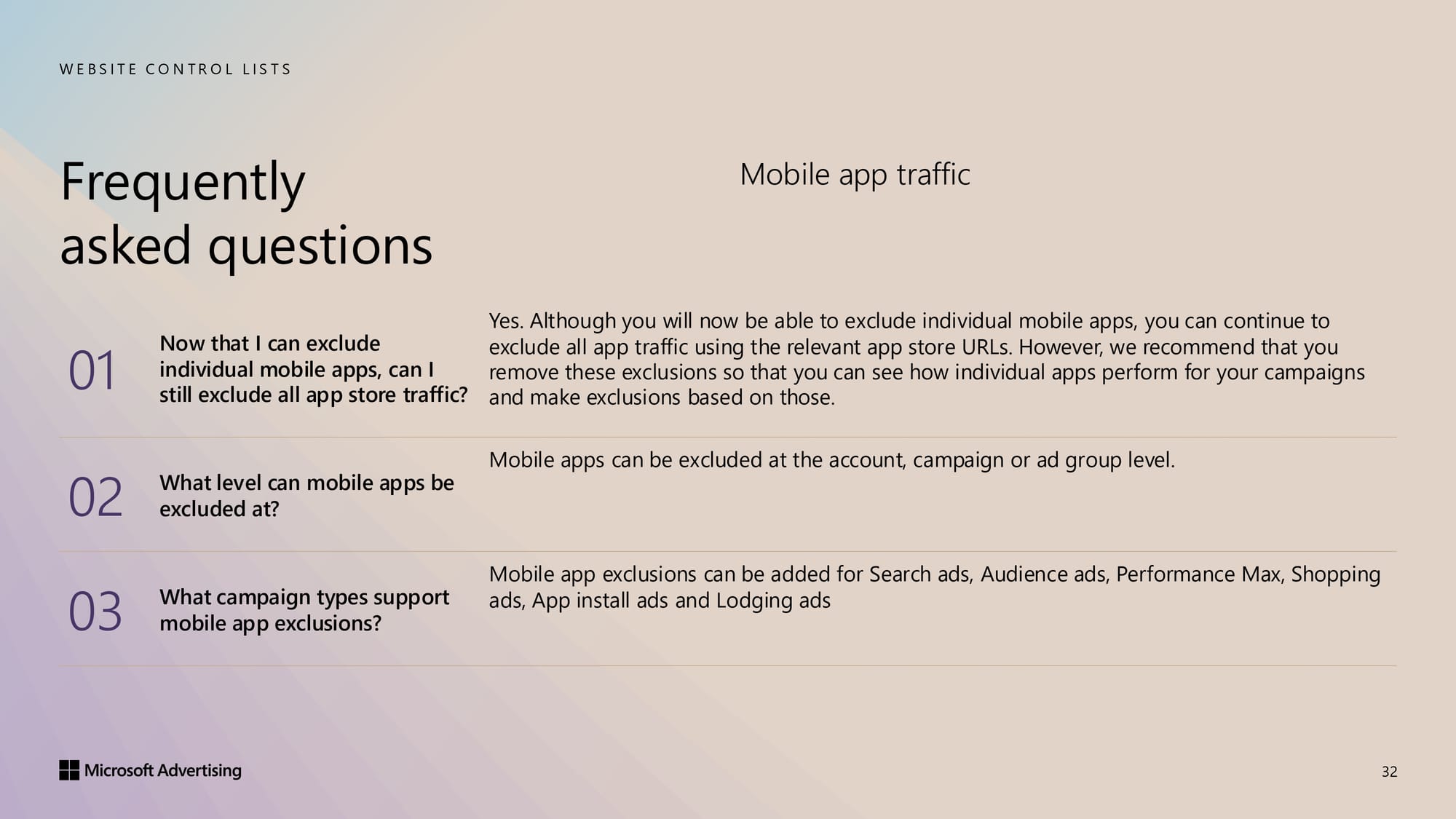
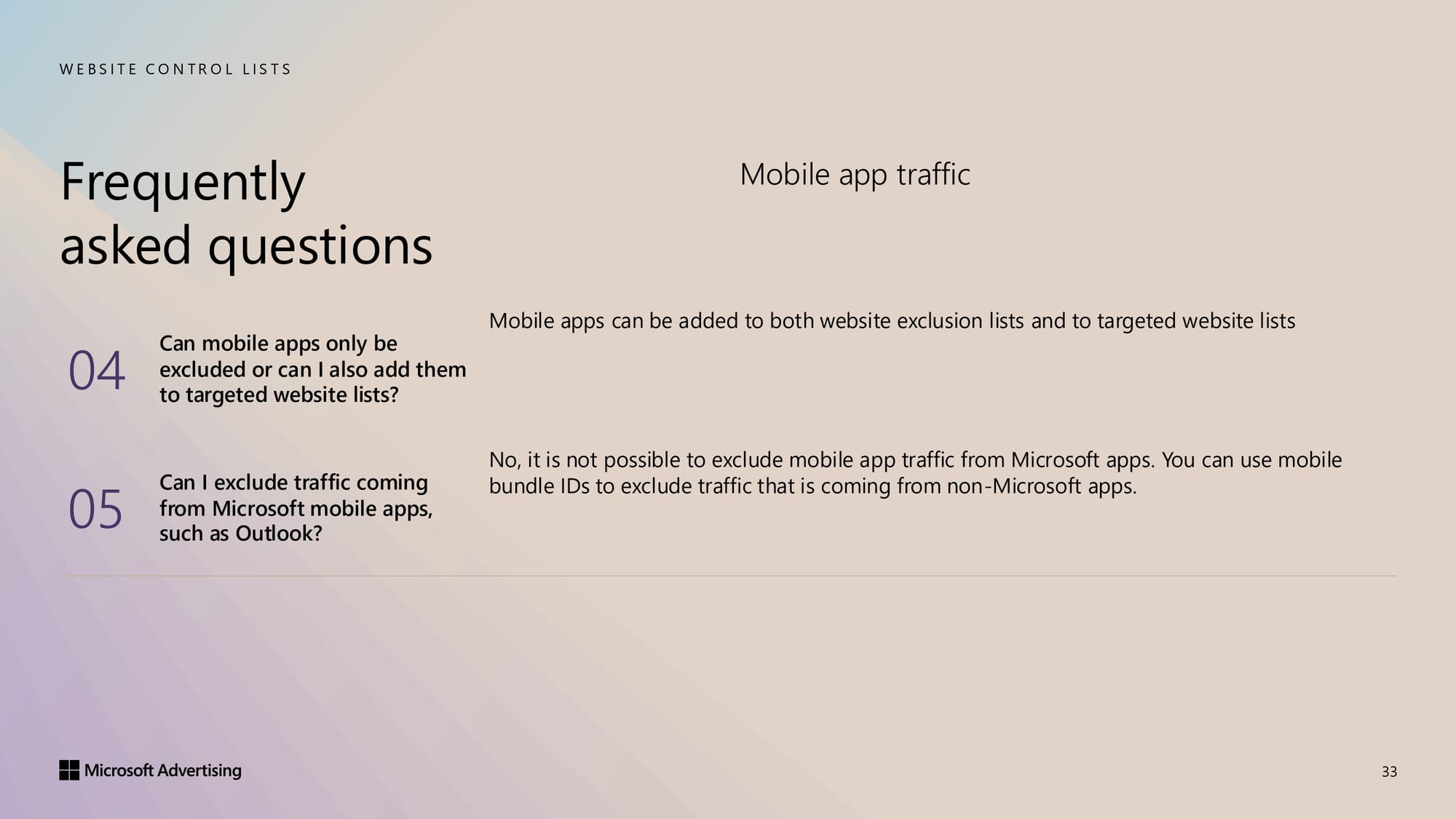

Subscribe the PPC Land newsletter ✉️ for similar stories like this one. Receive the news every day in your inbox. Free of ads. 10 USD per year.
Timeline
- August 2023: Microsoft launches native ads on MSN and Outlook through Microsoft Audience Network
- March 2024: Microsoft expands Display advertising options across 32 markets
- June 2024: IAS expands measurement solutions for Microsoft Advertising Network including brand safety assessment
- July 2024: Microsoft introduces brand lists for Performance Max campaigns
- July 2024: Performance Max shows results with brand exclusion pilot program availability
- January 2025: Microsoft Advertising announces enhanced website control lists with 10,000 domain capacity
- May 2025: Microsoft to sunset Xandr DSP while focusing on AI-driven advertising solutions
Subscribe the PPC Land newsletter ✉️ for similar stories like this one. Receive the news every day in your inbox. Free of ads. 10 USD per year.
Summary
Who: Microsoft Advertising platform affecting advertisers using Audience ads and Search ads across all global markets, with particular impact on advertisers seeking enhanced brand safety and website placement controls.
What: Comprehensive website control list updates enabling bulk management of up to 10,000 websites per exclusion list, creation of up to 100 lists per account, and introduction of targeted website lists alongside enhanced mobile app traffic management capabilities.
When: Announced in January 2025 through LinkedIn by Microsoft Ads Liaison Navah Hopkins, with website exclusion lists generally available and targeted website lists in open beta requiring Microsoft representative access.
Where: Available globally across all Microsoft Advertising markets through the Microsoft Advertising UI Desktop interface, supporting English language with plans for expanded language support.
Why: Addresses advertiser demands for enhanced brand safety, improved performance through high-performing website targeting, and greater control over automated advertising placements while maintaining compatibility with existing exclusion strategies.

